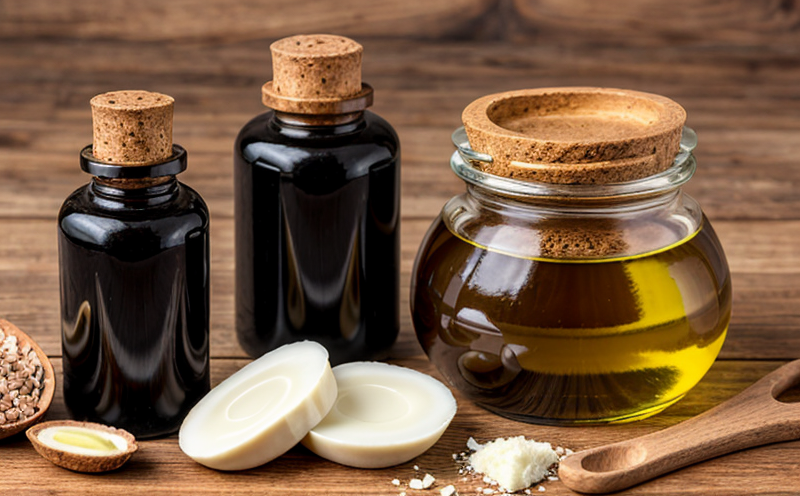Codex CAC/GL 71 Shelf Life Testing in Oils and Fats
The Codex Alimentarius Commission (CAC) Guideline for the Determination of Shelf Life (GL 71) is a critical standard for ensuring the quality, safety, and shelf stability of oil and fat products. This guideline provides methodologies to assess the shelf life of these products under various storage conditions.
Shelf life testing in oils and fats involves evaluating several key parameters that influence product integrity over time. These include oxidative stability, free fatty acids (FFAs), peroxide value, color changes, and sensory properties such as taste and odor. The primary goal of this testing is to determine the period during which a product can be safely consumed without posing any risk to human health.
For oils and fats, shelf life testing under GL 71 involves multiple steps, each designed to simulate real-world storage conditions and assess how these conditions affect the quality of the product. This includes accelerated aging tests at higher temperatures or humidity levels compared to typical storage conditions. The rationale behind this approach is that it provides a more accurate prediction of long-term stability.
The testing process begins with selecting appropriate samples representative of the batch being tested. These samples are then subjected to controlled environmental conditions designed to mimic various real-world scenarios, such as high temperatures and humidity levels. The tests can last anywhere from several weeks to months depending on the specific product and its intended shelf life.
During testing, multiple parameters are monitored regularly. For instance, free fatty acid content is measured using titration methods or infrared spectroscopy. Peroxide value, which indicates oxidative stress within the oil or fat, is determined through chemical analysis. Color changes are observed visually and quantified spectrophotometrically if necessary.
Sensory evaluations play a crucial role in determining whether there have been unacceptable changes to taste or odor. This involves trained panelists who evaluate the samples periodically throughout the testing period. The results from all these assessments form part of the comprehensive report presented at the end of the test cycle.
It's important to note that while GL 71 focuses on shelf life determination, it also considers other factors like packaging integrity and potential contamination risks during storage. Compliance with this guideline ensures not only product quality but also protects consumers from health hazards associated with spoiled food items.
- Accelerated aging tests simulate extended periods of storage under harsh conditions.
- Regular monitoring of key indicators helps in understanding the rate at which products degrade over time.
- Sensory evaluations by trained personnel provide valuable insights into changes in taste and odor.
Applied Standards
The Codex CAC/GL 71 is internationally recognized for its stringent requirements regarding shelf life testing of oils and fats. This standard ensures that all manufacturers adhere to consistent practices when determining the shelf life of their products.
For quality managers and compliance officers responsible for ensuring product safety and efficacy, adherence to GL 71 is essential. By following these guidelines, companies can demonstrate their commitment to maintaining high standards throughout every stage of production and distribution.
R&D engineers also benefit from this standard as it provides a framework within which they can innovate without compromising on established quality benchmarks. Procurement teams can use the results obtained from GL 71 testing during procurement processes to select suppliers who meet these stringent criteria.
The application of GL 71 goes beyond merely extending shelf life; it helps in maintaining product integrity and consistency across different batches produced by a manufacturer. This is particularly important for large-scale manufacturers where variations can significantly impact consumer satisfaction.
Compliance with GL 71 also aids in meeting regulatory requirements set forth by various countries around the world, thereby facilitating easier market entry into international markets. Consumers trust brands that comply with such globally recognized standards, which enhances brand reputation and loyalty among customers.
Environmental and Sustainability Contributions
- By accurately determining shelf life through GL 71 testing, manufacturers can reduce waste by producing only the amount of product that will be consumed before expiration. This minimizes environmental impact associated with unsold goods.
- The process also reduces energy consumption required for maintaining proper storage conditions, further contributing to sustainability efforts.
Furthermore, compliance with GL 71 promotes responsible sourcing practices by encouraging suppliers to provide high-quality raw materials. This contributes positively towards reducing deforestation and other environmental issues linked to unsustainable agricultural practices.
In summary, adherence to the Codex CAC/GL 71 guideline plays a vital role in promoting sustainable manufacturing processes while ensuring product quality and safety for consumers worldwide.
Competitive Advantage and Market Impact
Compliance with GL 71 not only meets regulatory expectations but also establishes a benchmark for excellence within the industry. Companies that consistently adhere to these guidelines gain significant competitive advantages over those who do not.
Firstly, brands known for their commitment to quality and safety are more likely to attract loyal customer bases. Loyal customers are less prone to switching brands due to perceived risks associated with product quality or safety issues.
Secondly, successful completion of GL 71 testing can lead to premium pricing strategies, reflecting the superior reputation of such products among consumers willing to pay more for higher quality items. Premium prices translate into increased profitability margins for manufacturers who invest in thorough testing protocols like those prescribed by GL 71.
Moreover, companies that demonstrate leadership in implementing rigorous shelf life determination processes may find themselves at an advantageous position when negotiating terms with retailers and distributors. Retailers often prefer suppliers who can provide reliable information about product longevity, reducing uncertainty for them regarding stock management decisions.
In conclusion, GL 71 compliance provides more than just a legal requirement; it serves as a strategic tool for enhancing brand image, driving sales growth, and securing long-term business success in the competitive food industry.





